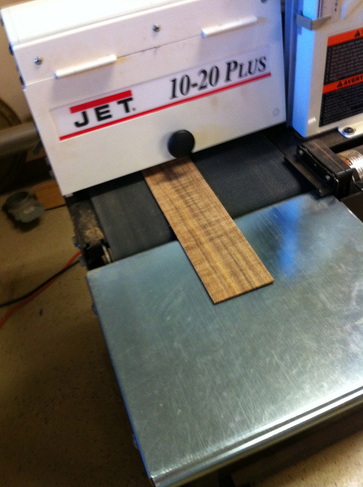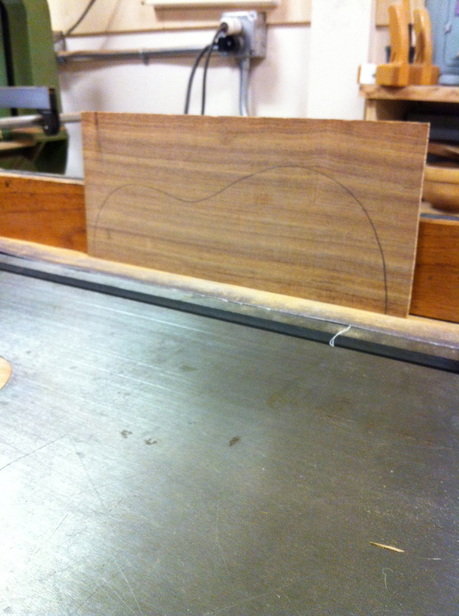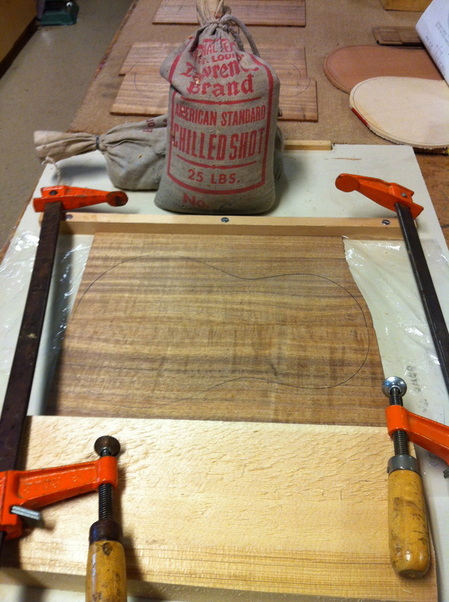
Here is a concert side being thinned down in the thickness sander. I took them down to .80 thousands of an inch, then marked them out and sawed them to shape. Then, since these are to be concerts, I sanded the sides down a bit farther to .75 thousands. I want these ukes to be light and resonant and plan to make them thin to achieve that goal. As I sand this Australian Blackwood I become more and more excited about the figure and beauty of this wood. I suspect when finished they are going to be quite gorgeous.

Next is working on the backs. Here I am sanding the center joint of the back perfectly straight so that the joint, when glued together, will be perfect. It is really pretty simple. I set a strip of 80 grit sandpaper on the perfectly flat surface of my table saw. move the saw fence over it to provide a vertical guide, and simply sand the edge flat. The secret is to sand in only one direction. If you sand on both the up-stroke and the down stroke you will never get it perfectly straight.
You do this until, holding both sides up against a bright light you can see not daylight in the crack. Now , and only now, are you ready to glue them together. In can take a while, be patient, it is important.
You do this until, holding both sides up against a bright light you can see not daylight in the crack. Now , and only now, are you ready to glue them together. In can take a while, be patient, it is important.

Here is all you need to glue together the two pieces of the back. A flat surface, a straight back stop, a movable pusher block, a couple of long Jorgenson clamps and a bag of heavy lead shot.
Underneath the wood is a sheet of Saran wrap to prevent everything or anything sticking to the base. You simply apply the glue lay the pieces on the saran wrap, put another piece of saran wrap on top of the joint, drop the lead on the joint and tighten the clamps. In a few hours these two pieces will be permanently joined, the joint almost invisible. Only then will I cut out the shape and thin the wood further.
Underneath the wood is a sheet of Saran wrap to prevent everything or anything sticking to the base. You simply apply the glue lay the pieces on the saran wrap, put another piece of saran wrap on top of the joint, drop the lead on the joint and tighten the clamps. In a few hours these two pieces will be permanently joined, the joint almost invisible. Only then will I cut out the shape and thin the wood further.

AND NOW back to the tenors. They are really looking great, but somehow, I knicked one of them and left a little ding on the cedar top. I decided to sand it out, but did so with sand paper under a finger. I knew better, but , oh well I ended up with the knick gone but a slight dip in the surface of the uke. In the right light it stood out, It was driving me nuts so I finally decided the only remedy was to sand it out with a flat block. Here you can see the slight low spot. the dark spot just north of the sanding block. I sanded until that spot was gone. Now I must catch up on the french polish regimen, but hurry should never be a part
